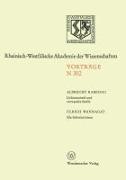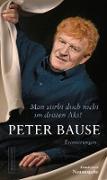Lithiumnitrid und verwandte Stoffe, Ihre wissenschaftliche und praktische Bedeutung. Sila-Substitutionen
BücherAngebote / Angebote:
Lithium-nitride is asolid electrolyte with a high Li+ -conductivity at ambient temperatures and attractive properties for an application in a primary battery. The proposed presence of a polarizable ion N3- in the unique hexagonal structure could be proved by measurements of Czochralski grown single crystals applying the methods of modern solid state science particulary x-ray diffraction. A model for the conduction mechanism of the Li+ -ions is presented. Using crysto-chemical considerations a material for application at higher temperatures could be found among the lithium-nitride halides. Literatur [1] "Solid Eleetrolytes, General Prineiples, Charaeterization, Materials, Applieations", ed. by. P. HAGENMULLER and W. VAN GOOL (Aeademie Press, New York, San Fran eiseo, London 1978). [2] H. RICKERT: Einführung in die Elektrochemie fester Stoffe (Springer-Verlag, Berlin, Heidelberg, New York 1973). [3] A. RABENAU: "Lithium Nitride, an unusual Ionie Conduetor" in: Festkörperprobleme (Advanees in Solid State Physics), ed. by J. TREUSCH (Vieweg, Braunschweig 1978) Vol. XVIII, pp. 77-108. [4] R. MIGONI, H. BILZ, D. BÄUERLE: "Mode-Mode Coupling in Incipient Ferroeleetries" in: Proeeedings of the Int. Conf. on Lattice Dynamies, ed. by M. BALKANSKI (Flam marion, Paris 1978) pp. 650-652. [5] F. GALLAIS, E. MASDUPUY: C.R. Aead. Sei. Paris 227, 635 (1948), E. MASDUPUY: Ann. Chim. Paris 13 Ser. 2 527 (1957). [6] Gmelins Handbuch der Anorganischen Chemie, 8. AufI., Lithium, Erg.-Band System Nr. 20 (Verlag Chemie Weinheim/Bergstr. 1960) p. 273. [7] E. SCHÖNHERR, G. MÜLLER, E. WINKLER: J. Cryst. Growth 43, 469 (1978). [8] E. ZINTL, G. BRAUER: Z. Elektrochem. 41, 102 (1935).
Folgt in ca. 5 Arbeitstagen




